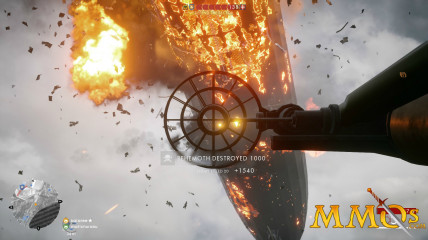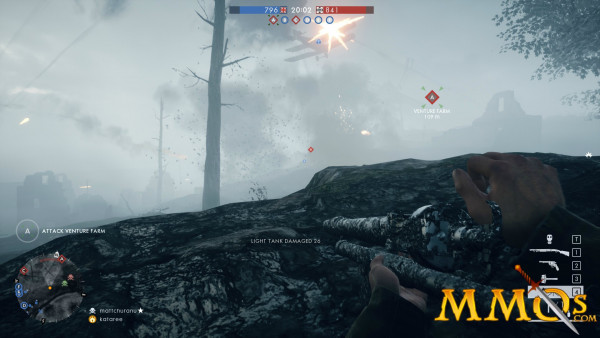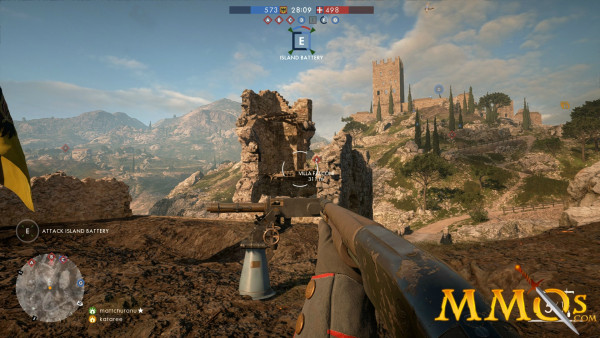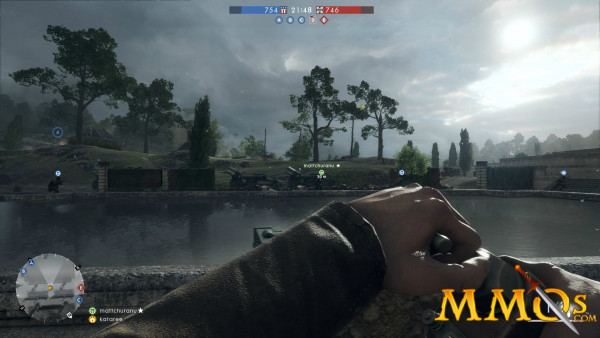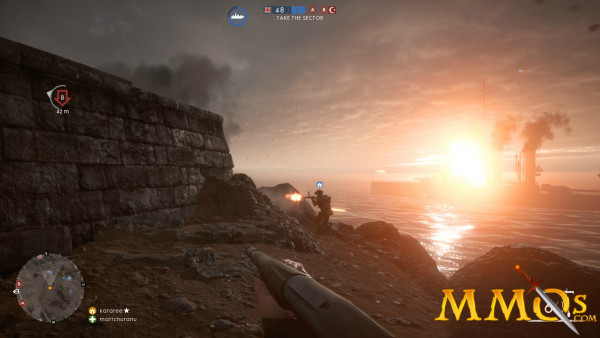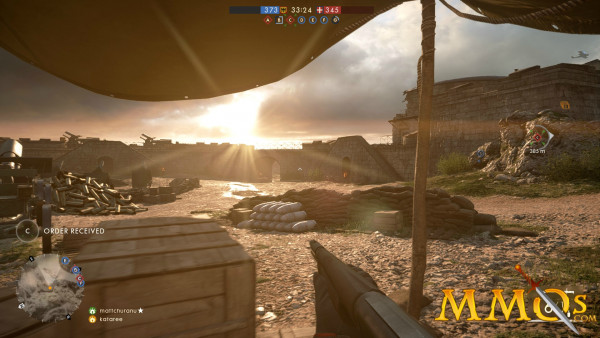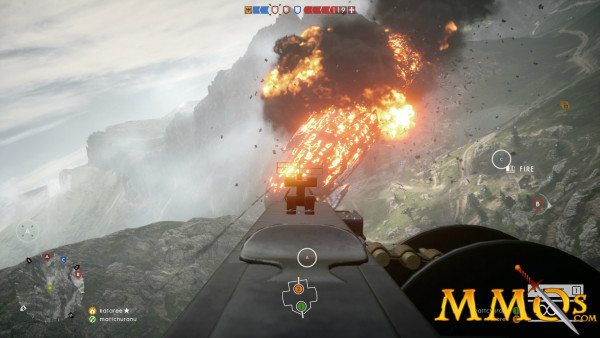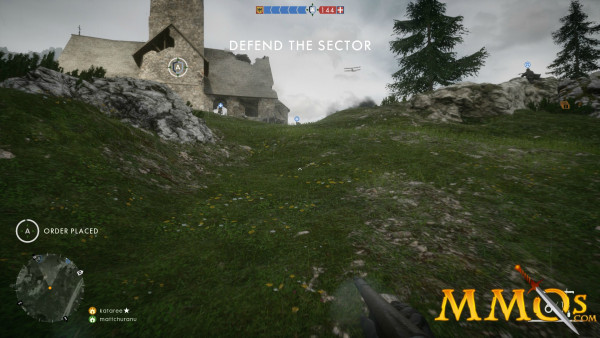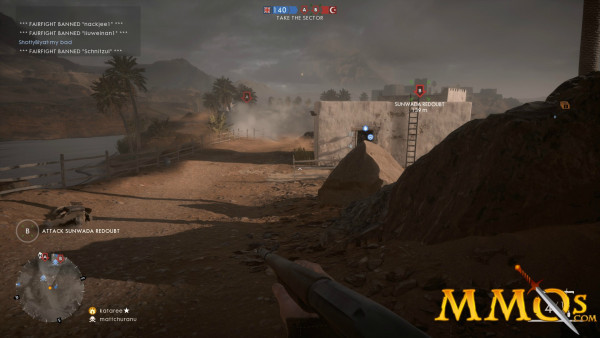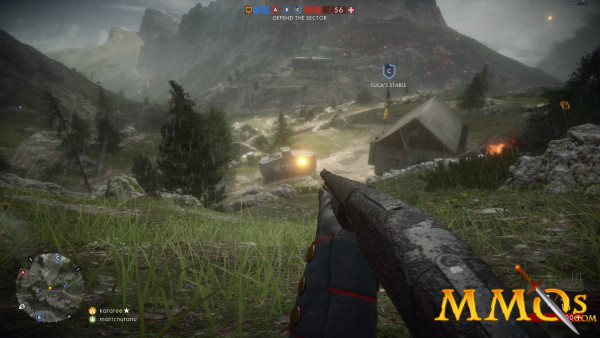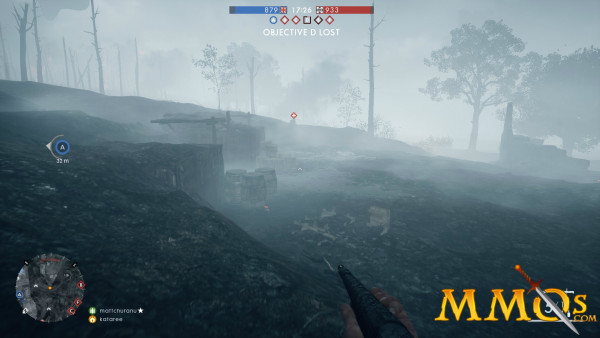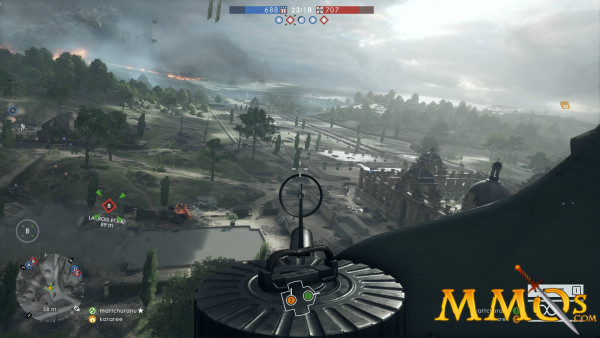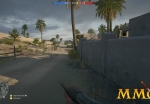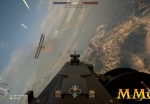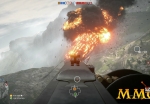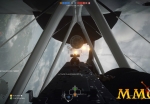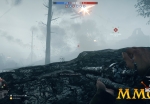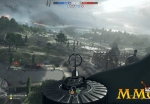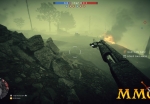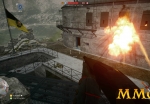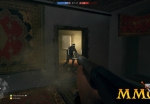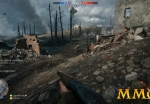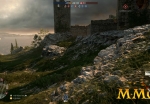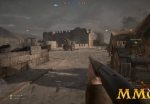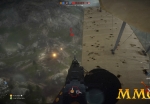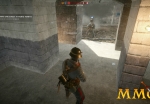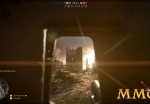Battlefield 1
Battlefield 1 is an upcoming FPS where up to 64 players engage in dynamic battles set during World War I. Take to land, air, and the sea to wage war with a variety of weapons and vehicles.
| Developer: DICE Playerbase: High Type: FPS Release Date: October 21, 2016 Pros: +Gorgeous graphics. +Battles feel dynamic and consistently interesting. +A good assortment of maps and modes. Cons: -The progression system is odd. -Some maps force the flow of combat in bad directions. -Points system heavily favors medics. |
Battlefield 1 Overview
Battlefield 1 is a large-scale FPS set during The Great War where players engage in up to 64 player battles. Fight along the Western Front, in the hostile deserts of Arabia, and atop the frozen peaks of the Italian Alps. Use a variety of historically accurate weaponry such as bolt-action rifles, flamethrowers, and more. Command vehicles such as tanks and planes to devastate your enemies, including a Royal Navy battleship. Multiple players can hop in a plane, on a motorcycle, or in a tank to work together. When you run out of ammo charge the enemy with your bayonet. Engage in multiple modes of play, some classic and others which will be debuting for the first time in Battlefield 1. And discover the perfect server for you thanks to a server browser.
Battlefield 1 Key Features:
- Multiple Game Modes - engage in modes of play both new and classic to the franchise.
- World War I - return to devastating 20th Century warfare commanding all of the technology available at the time.
- Server Browser - don't rely on matchmaking; use a server browser to find the match that suits you.
- 64 Player Battles - engage with up to 64 players on a single map waging war from the land, sea, and air.
- Squad System - for the first time in-game squads can stick together across multiple servers.
Battlefield 1 Screenshots
no images were found
Battlefield 1 Video
Battlefield 1 Review
By, Matt Chelen
Air-burst mortars fall all around you. A plane flies overhead, dropping bombs on your location. Tanks on your side desperately fight to clear the objective before enemy infantry overrun it. You and your squad hide out in a nearby building that is slowly crumbling with every hit; grenades are being thrown at it in an attempt to force you to abandon it. Suddenly, a gas grenade flies through a window, filling the room you’re hiding in with toxic gas. You put on your gas mask, but you know that the enemy won’t be far behind. They will soon sweep the building for survivors and you will likely be killed. You only have two choices: leave and hope that neither snipers nor tanks pick you off or make a desperate final stand. This is but one of the many scenarios that you may find yourself in in Battlefield 1.
An Incredibly Immersive Experience
Perhaps Battlefield 1’s greatest strength is that it is incredibly immersive. When bombs fall, they leave small craters in the ground. Clouds of dirt and smoke disperse into the air, obscuring your vision. Buildings crumble around you as explosives hit them. Fog and sandstorms roll in, depending on the map, making it hard to see and impossible to scout distant targets.Gas grenades will make your vision hazy as you slowly die from inhaling the fumes; smoke grenades can blind you completely. When you put on a gas mask, your vision is slightly obscured and you can hear audible breathing. Nearby enemy soldiers can be heard barking orders in their native language.
Unlike many games, even the way everything moves adds to the immersion. Each player moves more naturally than I’ve ever seen in a first-person shooter, their cloaks waving about as they run. In first-person view, your gun swings around more believably than the small amount of bouncing and tilting seen in other titles. During the first serious dogfight that I got into, I remember thinking “all of those cinematic trailers that we’ve idealized for years, I’m finally playing one of them.” I simply have not ever been as immersed in a first-person shooter as I have been with Battlefield 1. Everything about it feels so incredibly natural.
Highly Interactive
While it may seem like an odd thing to say, Battlefield 1 is a game that features high levels of interactivity. Practically everything on the map can be used or affected in some manner or another and most of it even serves a purpose. Field guns lying around the map provide explosive weaponry to classes without them and are often used to destroy vehicles. Anti-air guns can be used to quickly take down incoming planes. Doors can be opened and closed; some can even be locked. Entire buildings can be destroyed piece by piece, leaving them in ruin. Stationary weapons throughout each map can be destroyed entirely, but will often respawn. Even the ground itself can be altered by explosives. The game does a good job of making you feel as if you can truly interact with the environment around you.
Everyone Has A Role
While the Beta initially had me concerned that matches would largely be dominated by Scouts sniping everything in sight, I’ve come to see that every class has a role. The Assault class is primarily used to clear points quickly, offering the best close-range experience, as well as the best arsenal for taking out tanks and other land-based vehicles. Medics are intended to heal and revive other players while making use of various rifles that, in some cases, can even allow them to snipe. The Support class can deal heavy damage close and medium ranges, as well as deploy mortars and repair vehicles. Scout is best at providing cover fire and taking out targets from a distance.
When the four classes do their jobs and work together, it’s clear that they complement each other well. Are they balanced points-wise? No. You will undoubtedly get the most points for the least effort as a Medic, but you won’t find yourself disadvantaged in combat because of the class you chose.
You won’t, however, always find people doing their jobs. It seems that a significant number of players choose their class based on the weapons that are available to them—as each class has a different set of primary weapons. However, that doesn’t make it any less depressing to see a Medic run past you and revive someone else when you need a revive or to see a Support blatantly ignore a vehicle that needs repairs.
Players can also find Elite Class gear on the battlefield, which spawns at set locations on each map at various times. The three Elite Classes available are Flame Trooper, Sentry, and Tank Hunter, each of which is primarily intended to simply wreak havoc on the other team. The Flame Trooper is perhaps the most powerful, able to easily take out groups of enemies all at once, but the Sentry can deal a decent amount of single-target damage. The Tank Hunter is intended to take down vehicles, leaving it without much of an advantage over the Scout class when dealing with infantry.
An Assortment of Game Modes
While there are several game modes, most of your time will likely be spent in Conquest. Conquest pits two teams of 32 against each other in a bid for several capture points. The amount of capture points each team has will determine how many points they get. The first team to 1000 wins. The use of vehicles is permitted, including tanks, artillery trucks, motorcycles with sidecars, cars with mounted guns, planes, and boats, the availability of which depends on the map. At some point within each match, the losing team will be given a “Behemoth,” a massive vehicle, which, depending on the map, may be a battleship, a train, or a zeppelin. If used properly, the Behemoth can effectively dominate a specific part of the battlefield, turning the tides of battle in favor of the losing team.
Conquest is the definitive game mode. It features the largest number of players in an all out war for various points. Some maps are absolutely massive and it is completely viable for teams of players to launch sneak attacks on a point towards the back of a defensive line in order to create a spawn point for the rest of their team to flank the enemy from behind, should the front lines reach too much of a standstill. It also features all sorts of vehicles, including planes, tanks, artillery trucks, and boats, sometimes all on one map.
Domination is basically a 12v12 version of Conquest in smaller versions of the Conquest maps without vehicles. While I can appreciate the fact that it changes the way you play the game entirely, I didn’t find it to be quite as enjoyable. The Battlefield experience really relies on having combined arms warfare.
Rush is another 12v12 objective-based mode in which one team rushes to destroy telegraph posts within a specific amount of time while the other team works to defend them. Posts are destroyed by placing bombs on them, which must then be defended for a short period of time, during which the defending team can defuse them. The mode is fast-paced and fun, but it can also feel fairly restrictive. There are only a few objectives active at any one time, meaning that there are only so many places players are going to be. Clashes happen often and, more often than not, I found myself frustrated when playing on offense, due to the mode seeming to be stacked in favor of the defensive team.
Operations takes the basic gameplay of Conquest and expands it into what is almost a mini-campaign spanning across multiple maps, each of which has several stages. The offensive team must take control of the entire map one sector at a time while the defensive team must ensure that that doesn’t happen. The offensive team has a specific number of respawns available and, should they be depleted, the offensive team will lose the round and they must start over from the sector they left off on. Each match of Operations has several rounds, the exact number of which depends on the Operations mini-campaign.
Playing a match in Operations is one of the most intense experiences I’ve ever had in a game. The focused nature of it in a 64-player setting makes it feel as if it’s impossible to move without getting shot. Few games give you the feeling of helplessness than that of playing on the defensive team and making a final stand in a fortress, planes dropping bombs on you while infantry just outside the gates continuously lob grenades your way. They’re designed to last over an hour, so they can take a while, but it is well worth experiencing. The mode even features a basic storyline and some historical facts about the battles that you take part in.
War Pigeons is a 12v12 objective-based mode with several stages in which players attempt to write messages to their artillery operators, giving them instructions on where to bomb. Players must first find a pigeon on the map and hold onto it long enough to write a message. Should the enemy team get a hold of the pigeon while the message is being written, the timer will be reset, but other players on your team can grab the pigeon if dropped and continue where the last carrier left off. Once the message is written, the carrier must find a good spot to release it and manually press a button to release it. It will then fly to your artillery operators, during which time it can be shot down by the opposing team. If it successfully makes it to its destination, the player who released it will get any kills that occur as a result of their team’s artillery bombing the area.
War Pigeons is a unique mode and I found it to be rather fun. Unfortunately, it is also the least popular mode by far, which I’m told is because of the amount of teamwork that it requires. It’s unfortunate, as it is fast-paced, fun, and has an ever-moving objective that can even trade hands. Small map size and random spawns keep matches focused, but fair. It’s more dynamic than the other modes while simultaneously featuring less features. It is also perhaps the only mode that I played that I didn’t actively miss the vehicular combat going on around me.
Team Deathmatch is a 12v12 mode in which both teams aim to be the first to 100 kills. It’s a mode that I feel needed to be included, but I found myself almost immediately wishing that I was playing a different mode. The maps are the same size as the ones used in War Pigeons and random spawns are utilized, as well. The problem is that Battlefield simply isn’t designed for Team Deathmatch. Whereas the other modes are constantly engaging, I found myself bored of Team deathmatch within a minute or so.
All Maps Are Not Created Equal
While the majority of the game’s existing maps are fun and expansive, several of them have glaring flaws that I wasn’t fond of. My least favorite map of the current crop, by far, is Argonne Forest. The reason that I dislike the map so much is that it is a smaller map that funnels players in odd ways and features no vehicles. Gone are the open areas in which you have to take cover behind the nearest rock or sand dune, replaced by a lush forest with cover everywhere and confined spaces. On paper, the map sounds like it should work out, but each and every path that you can take feels like a hallway branching off of another one, with invisible walls everywhere. Whereas you can climb onto rooftops in Ballroom Blitz and cliffs in Sinai Desert, Argonne Forest restricts you to the beaten path, forcing you to face your opponents head on in almost every encounter. There is significantly less room for variance in tactics, often forcing the same tactics time and time again. I also feel that the confined spaces hinder the use of the Behemoth, which is a train, in that there is barely room for the Behemoth to fire and it is easily taken down. Furthermore, Objective E is far too close to the one team’s restricted area and I’ve seen many players use that to their advantage, running back across the boundary where the opposing team can’t chase them if they need to heal.
I have a similar dislike for Suez. While the map is fairly open, it is small, featuring only three objectives that are placed in a line. You are not only encouraged, but basically forced to face the opposing team head on. More often than not, matches on Suez are practically standstills at one point or another. Despite the small number of points, there is rarely a time in which one team owns all three. When the Behemoth, a train in this case, finally shows up, it can dominate the entire map easily, hitting targets on all three points simultaneously. It is the exact opposite problem that Argonne Forest has. It’s fairly obvious that the problem was meant to be alleviated by the distance the Behemoth has from each of the points, but it does little to counter the obvious domination that it has over the map.
Fao Fortress is another map that I dislike because it provides an odd experience in which, more often than not, one team will own every point except the two within the fortress. Perhaps true to real life, the fortress is easily defended, leaving most bids for it at a standstill. However, it takes most of a team to hold it, leaving what’s left of the team to be easily taken down by the opposing team. It almost incentivizes not concerning yourself with the fortress at all, as you will have five points to the other team’s two should your team play well.
On a more positive note, Ballroom Blitz is perhaps my favorite map right now. It features a good balance between open space and more confined areas defined by various structures while allowing players to fly planes, as well as drive land-based vehicles. Empire’s Edge is a similarly great map, providing the same balance between open space and confined areas on a larger scale and incorporating all of the game’s vehicles.
An Odd Progression System
While it’s not hard to understand, I’ve found Battlefield 1’s progression system to be odd. As you earn points in matches, you will earn experience towards two separate levels: your account level and your current class level. Your account level is basically cosmetic, other than providing War Bonds every time you level up. On the other hand, certain weapons require you to reach a certain class level in order to unlock them. Once you’ve unlocked the weapon you want, you have to purchase it with War Bonds.
Oddly, most weapons are unlocked within the first few levels. Furthermore, they are mostly clear-cut variations of a set of three or four weapons, offering bonuses to hip fire or changes to spray patterns. In a large way, almost all real progress that you can make is over before it really begins.
Final Verdict - Excellent
Battlefield 1 is an extremely competent game. The graphics are absolutely gorgeous, it is incredibly immersive, and it is successful in making combined arms warfare feel fair even at the worst of times. There are some oddities—I take issue with the design of certain maps, the progression system, and the fact that the points system heavily favors Medics that actively do their jobs—but I find that they rarely detract from the overall experience. The simple fact of the matter is that Battlefield 1 redefined the first-person shooter genre for me. It is one of the single most immersive games I have ever played and I would be remiss to say that I am not utterly entranced by it.
Battlefield 1 Videos
Battlefield 1 Requirements
Minimum Requirements:
Operating System: 64-bit Windows 7, Windows 8.1 and Windows 10
CPU: Intel Core i5 6600K or AMD FX-6350
RAM: 8 GB GB RAM
Video Card: Nvidia GeForce GTX 660 2GB or AMD Radeon HD 7850 2GB
Hard Disk Space: 50 GB Free Space
Recommended Requirements:
Operating System: 64-bit Windows 10 or later
CPU: Intel Core i7 4790 or AMD FX 8350 Wraith
RAM: 16 GB GB RAM
Video Card: Nvidia GeForce GTX 1060 3GB or AMD Radeon RX 480 4GB
Hard Disk Space: 50 GB Free Space
Battlefield 1 Music & Soundtrack
Coming Soon!
Battlefield 1 Additional Information
Developer(s): EA DICE
Publisher(s): Electronic Arts
Director: Lars Gustavsson
Designer: Daniel Berlin
Artist: Gustav Tilleby
Announcement Date: May 06, 2016
Release Date: October 21, 2016
Development History / Background:
Battlefield 1 is developed by Swedish development studio EA DICE. The game was leaked prior to an official announcement on May 06, 2016, but was later unveiled through a Twitch livestream. An Open Beta is scheduled for some time in 2016, prior to a scheduled release date of October 21, 2016.
